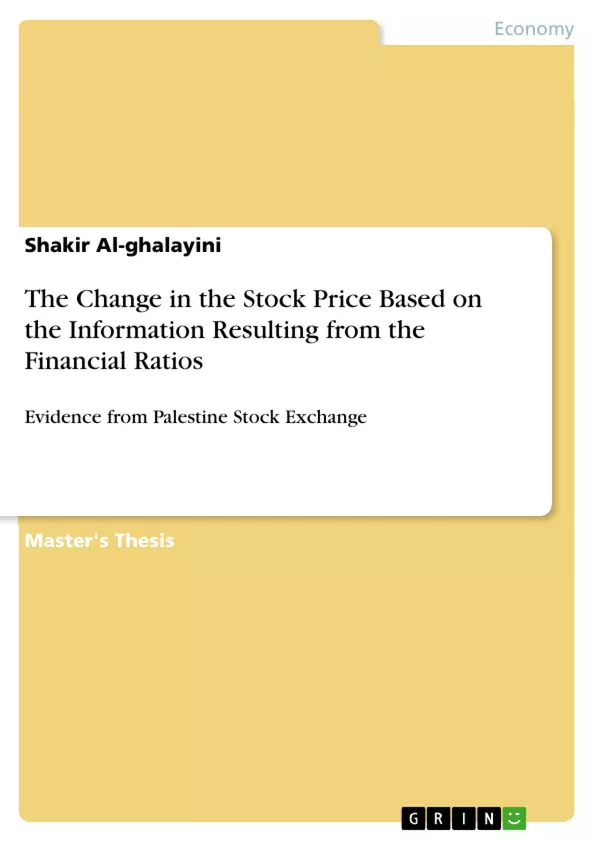This study aimed to predict stock prices in Palestine Stock Exchange (PEX) by testing group of financial ratios and find a quantitative model, in which can be relied upon to predict the stock price for each sector. This model will help investors make rational decisions when they make investment decision in the financial market. To achieve this purpose, (17) financial ratios from (35) listed companies were tested using the available data for period 2009-2013.
These ratios were analyzed using multiple regression to find the best model for each sector of (PEX). Several financial ratios can be used to predict the stock price in the industry sector, which are (earning per stock, market price on book value, days sales outstanding, fixed assets turnover, return on equity and profit margin). In the investment sector, the following ratios (market price on book value, assets turnover, market price on cash flow and fixed assets turnover) can be used to predict the stock price. Adding to that, the ratios of (earning per stock, market price on book value and return on equity) can predict the stock price of service sector. In the insurance sector, the ratios of (earning per stock, return on assets, debt ratio and assets turnover) can be used in predicting stock price. Finally, the ratios of (market price on book value, earning per stock, return on equity, basic earning power and fixed assets turnover) predicting the banking sector stock price.
The study recommended the need to increase attention and caring when preparing the financial statements and must be prepared according to the Palestinian Stock Exchange standards, and the investors can rely on financial analysis of the financial statements when making financial investment decisions.
Inhaltsverzeichnis (Table of Contents)
- Abstract
- Deduction
Zielsetzung und Themenschwerpunkte (Objectives and Key Themes)
The study aims to predict stock prices in the Palestine Stock Exchange (PEX) by examining financial ratios and developing a quantitative model for each sector. This model will aid investors in making informed investment decisions. The study analyzes 17 financial ratios for 35 companies, covering the period 2009-2013, to determine the best model for each sector.
- Predicting stock prices in the Palestine Stock Exchange (PEX)
- Developing a quantitative model for each sector
- Analyzing financial ratios to identify key indicators
- Assisting investors in making informed investment decisions
- Improving transparency and accuracy of financial reporting
Zusammenfassung der Kapitel (Chapter Summaries)
- Abstract: This section outlines the study's objective to predict stock prices in PEX through financial ratio analysis. It details the methodology, which involves testing 17 financial ratios for 35 companies from 2009 to 2013, and explains how the results are used to develop a quantitative model for each sector. The abstract also highlights the significance of the study for investors and emphasizes the need for accurate and transparent financial reporting in PEX.
Schlüsselwörter (Keywords)
The main keywords and focus topics of the text include stock price prediction, financial ratios, Palestine Stock Exchange (PEX), quantitative model, investment decisions, financial reporting, transparency, and accuracy. The study centers around the application of financial analysis techniques for predicting stock prices and informing investment decisions in a developing market context.
- Arbeit zitieren
- Shakir Al-ghalayini (Autor:in), 2015, The Change in the Stock Price Based on the Information Resulting from the Financial Ratios, München, GRIN Verlag, https://www.grin.com/document/287344



